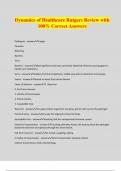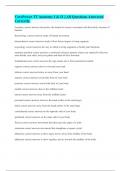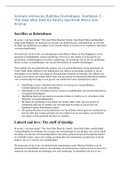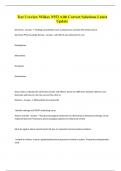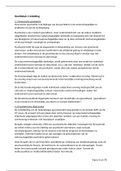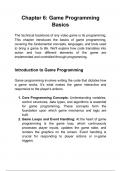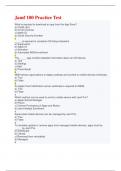Exam (elaborations)
Test Bank for Pathophysiology; The Biology Basis for Disease in Adults and Children 9th Edition (Mosby, 2022) by McCance and Huether, Isbn no; 9780323789875, All Chapters Covered (NEWEST 2025)
Test Bank for Pathophysiology; The Biology Basis for Disease in Adults and Children 9th Edition (Mosby, 2022) by McCance and Huether, Isbn no; 9780323789875, All 50 Chapters Covered (NEWEST 2025)
[Show more]




